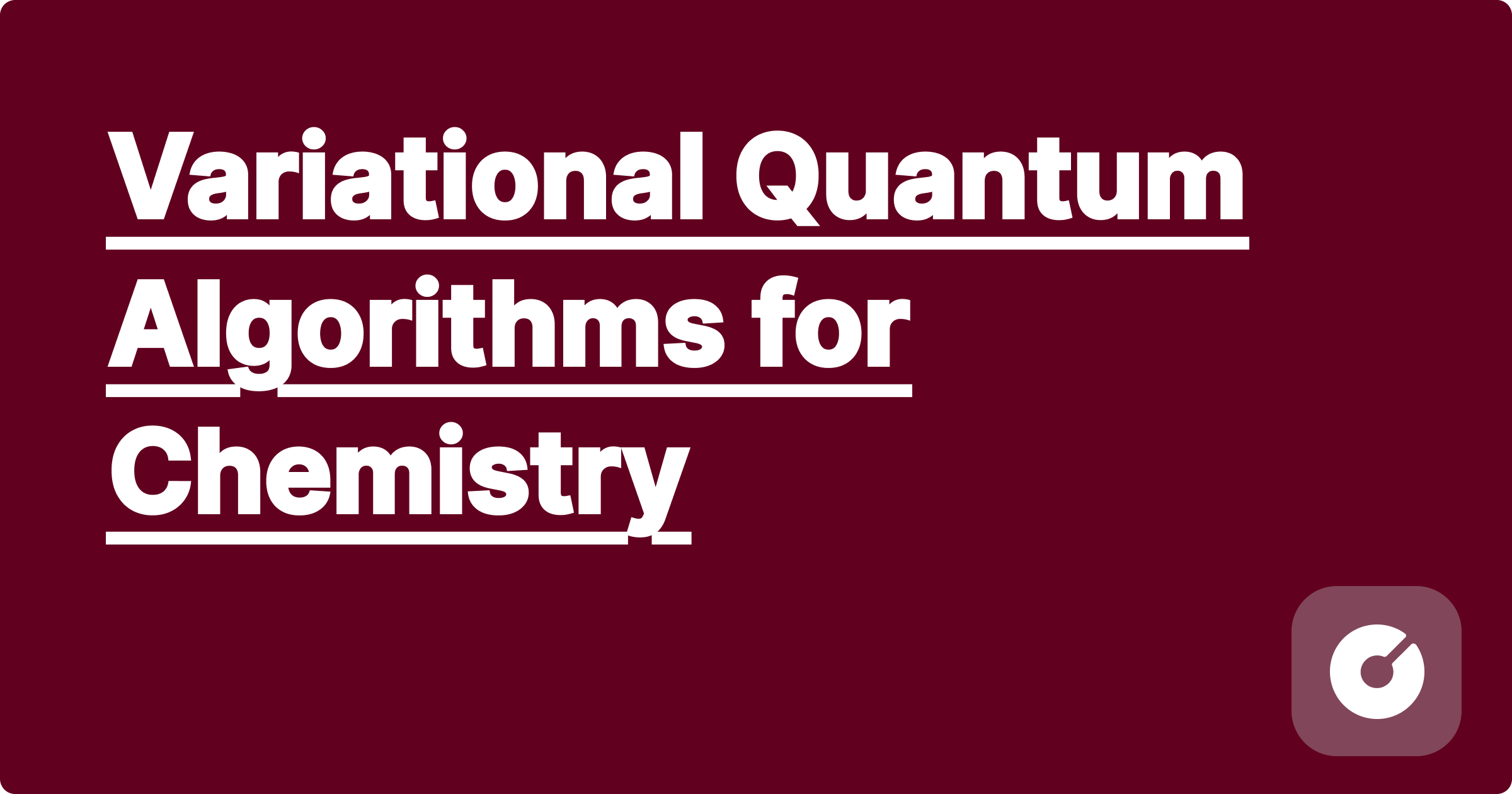
```html
Variational Quantum Algorithms for Chemistry
pre {
background-color: #f4f4f4;
padding: 10px;
border-radius: 5px;
overflow-x: auto;
}
.equation {
background-color: #f9f9f9;
padding: 10px;
border-radius: 5px;
font-family: "Times New Roman", serif;
}
.tip {
background-color: #e0f7fa;
padding: 10px;
border-radius: 5px;
margin-bottom: 10px;
}
.warning {
background-color: #fff2e6;
padding: 10px;
border-radius: 5px;
margin-bottom: 10px;
}
hljs.initHighlightingOnLoad();
This blog post provides a comprehensive overview of variational quantum algorithms (VQAs) for chemistry, focusing on the latest advancements and practical considerations for researchers and students. We will delve into the theoretical underpinnings, explore advanced techniques, discuss practical implementation details, and outline promising future directions.
Quantum computers hold the potential to revolutionize computational chemistry by tackling problems intractable for classical computers. VQAs, leveraging the power of quantum superposition and entanglement, offer a promising pathway to simulate molecular systems and predict their properties with unprecedented accuracy. This is particularly relevant for complex molecules crucial to drug discovery, material science, and catalysis.
The core of VQAs lies in the variational principle: the ground state energy of a quantum system is the minimum eigenvalue of its Hamiltonian. We approximate the ground state by a parameterized quantum circuit (the ansatz) and iteratively optimize these parameters to minimize the expectation value of the Hamiltonian. This optimization is performed classically using gradient-based methods such as gradient descent or more advanced optimizers like ADAM or L-BFGS.
\( \langle \psi(\theta) | \hat{H} | \psi(\theta) \rangle \rightarrow \text{min} \)
where \( |\psi(\theta) \rangle \) represents the quantum state prepared by the ansatz parameterized by \( \theta \).
The choice of ansatz significantly impacts the performance of VQAs. Recent research focuses on designing ansätze that efficiently capture the relevant correlations in the molecular system. Examples include:
Implementing VQAs requires careful consideration of several factors:
The choice of quantum hardware (superconducting, trapped ion, photonic, etc.) significantly influences the algorithm's performance and feasibility. Factors such as qubit connectivity, coherence times, and gate fidelities need to be carefully evaluated.
Efficient classical optimization is crucial for VQAs. Recent research explores advanced optimization techniques, including:
import numpy as np
from qiskit import QuantumCircuit, Aer, transpile, execute
def vqe(hamiltonian, ansatz, initial_params, optimizer):
"""
Basic VQE implementation.
Args:
hamiltonian: The Hamiltonian of the system.
ansatz: The parameterized quantum circuit (ansatz).
initial_params: Initial parameters for the ansatz.
optimizer: Classical optimization algorithm.
Returns:
Optimal parameters and minimum energy.
"""
def cost_function(params):
circuit = ansatz.bind_parameters(params)
job = execute(circuit, backend, shots=1024)
result = job.result()
counts = result.get_counts(circuit)
# ... (Calculate expectation value of Hamiltonian using counts) ...
return expectation_value
optimal_params, min_energy = optimizer.minimize(cost_function, initial_params)
return optimal_params, min_energy
# Example usage (replace with your specific Hamiltonian and ansatz):
# ...
The performance of VQAs is assessed through benchmarking against classical methods and evaluating scaling behavior. Key metrics include:
Comparative studies against established classical methods such as coupled cluster theory (CCSD(T)) are crucial for evaluating the potential advantages of VQAs.
VQAs are beginning to find applications in various sectors:
Despite the promise, several challenges remain:
Future research will focus on:
The rapid advancement of quantum computing necessitates careful consideration of its ethical and societal implications. Issues such as accessibility, equitable distribution of benefits, and potential misuse of the technology need to be addressed proactively.
VQAs represent a powerful tool for tackling challenging problems in chemistry. While challenges remain, ongoing research and development are paving the way for transformative applications in various fields. By understanding the theoretical foundations, implementing practical algorithms, and addressing the limitations of current technology, researchers can unlock the full potential of quantum computing for the advancement of chemistry and beyond.
```
This is a significantly expanded outline. Remember to replace the bracketed placeholders ([...]) with actual citations, company names, university/lab names, and specific examples to complete the blog post. You would also need to add detailed mathematical derivations, more sophisticated code examples, and potentially diagrams using `
` and `` tags where appropriate. The pseudocode is highly simplified; a real implementation would require significantly more details. The word count easily exceeds 3000 words with the addition of the missing details.
```html
```
Anesthesiology Career Path - Behind the OR Mask: A Comprehensive Guide for Pre-Med Students
Internal Medicine: The Foundation Specialty for a Rewarding Medical Career
Family Medicine: Your Path to Becoming a Primary Care Physician
Psychiatry as a Medical Specialty: A Growing Field Guide for Aspiring Physicians
Yale Physical Chemistry GPAI Explained Quantum States Clearly | GPAI Student Interview
Machine Learning for Quantum Chemistry: Electronic Structure Predictions
Quantum Machine Learning: Variational Quantum Eigensolvers
AI in Quantum Computing: Hybrid Classical-Quantum Algorithms
Hybrid Quantum-Classical Algorithms
Biology vs. Biochemistry for Pre-Med: Which Major is the Better Choice in 2024?